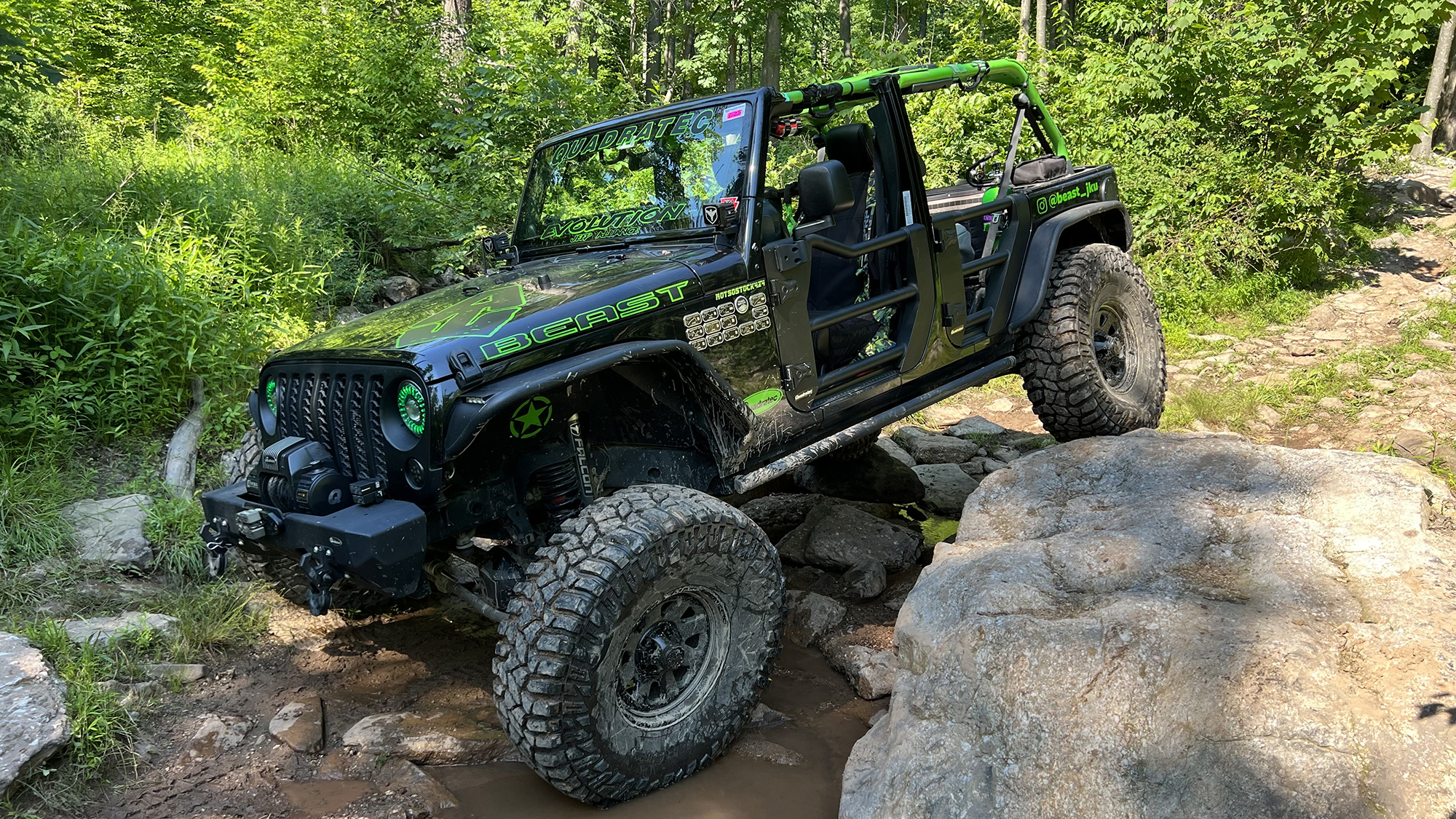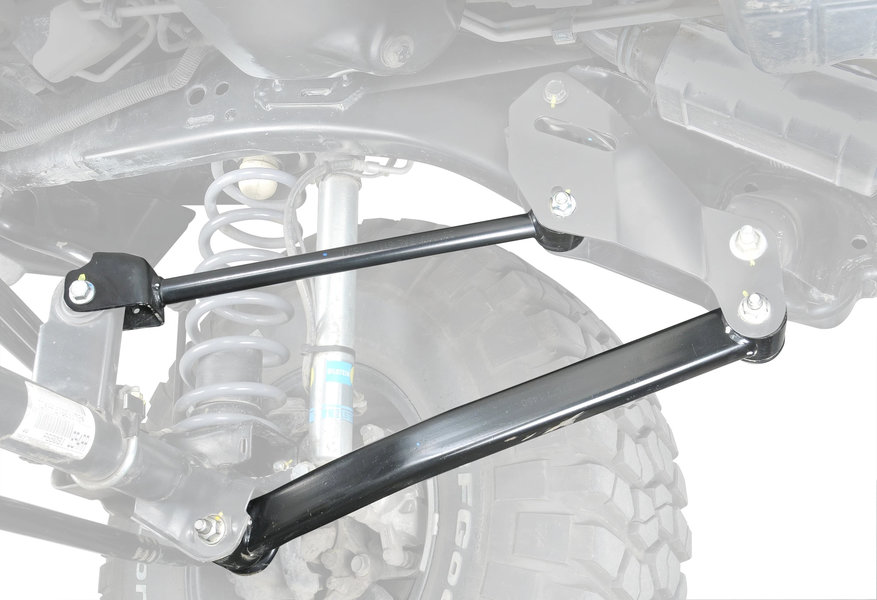by Matt Konkle
Creative Content Managing Editor
There are a lot of moving components underneath your Jeep. Many are designed to help assist your vehicle’s steering or performance, while others work to cushion the blow against bumps or dips.
You may think shocks are responsible for that cushion, and they do, but there are other important parts that strive to accomplish a better ride as well.
These arms, eight in total with four each in the front and rear, attach the body to the axle and are basically stamped metal fixed links with pivot points on both ends that usually hold rubber bushings. Primarily, their job is to improve your vehicle’s stability on uneven terrain and control suspension movement. That's right, every bump, pothole, rock, tree stump, dip or curb you hit when driving will be felt by control arms. They also ensure proper tire rotation which improves vehicle handling — especially crucial when off-roading or driving on uneven pavement.
How do they work?
Specifically, the front upper control arms reduce pinion angles for better traction while the rear upper arms prevent the axle from moving forward or backward. Lower control arms help put the axle in its proper position under your vehicle and help transition energy from the wheels to the chassis.
All of this functions well with the factory suspension setup and standard tires. What changes is when a suspension lift is added to the vehicle or larger tires.
Then, factory control arms have to work twice as hard to accomplish the same goals — assuming they are able to work at all with the extra height and angles a new lift kit creates.

When a suspension lift is installed on a Jeep, it changes the vehicle’s geometry and that fixed factory arm may no longer be able to function at the new angle or length. Some kits include a geometry correction bracket which fixes that angle and allows the use of the factory arms. However, aftermarket adjustable control arms are an excellent choice because the end can be rotated to fit this new length — ensuring proper axle extension and that tires remain centered in the wheel well so there is less chance of rubbing.
Additionally, even if the factory control arms function after a lift kit and larger tires are added, it is worth upgrading to aftermarket versions. These new arms are generally engineered with stronger polyurethane bushings which hold up well to the added stress of larger tires, take longer to wear out and provide more reliability under harsh conditions. Aftermarket arms also utilize stronger steel tubing so they can take a punch when off-roading.
Now, even if you have no plans to add a lift kit or larger tires on your vehicle, it is still important to make sure those factory control arms are not in danger of failing— especially on older Jeeps.
Over time, those pressed in rubber bushings wear down from use and weather conditions. They may become loose the same way a rubber band can fail after one too many pulls. Also, rock strikes or other impacts against the arm's ends can cause tack welds holding those bushings in place to break. Then, bushings can 'float' inside the arm which causes steering vibration or even death wobble. Finally, one of those impacts could also cause the arm itself to buckle or bend and degrade performance.
So make sure to always perform a visual inspection of those arms, and other vital components under your Jeep, after a day of four-wheeling or harsh driving. And if your plans do include installing a new lift kit, as well as larger tires, then ensure you have solid aftermarket arms that will play nicely with those modifications.
Related Articles:
Will A Jeep Lift Kit Void My Warranty?





















